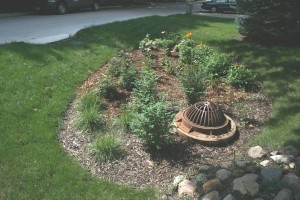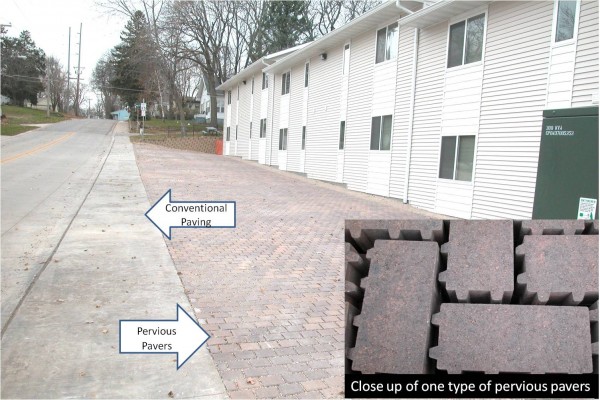For information about smart planning, Low Impact Development, or financial assistance please contact the Dickinson County SWCD at 712-336-3780 ext. 3.
Pervious Paving
Previous Paving is a system that allows storm water to flow infiltrated of off the surface through a system that filters the runoff, cleans it, and slowly releases it to the lake. The storm water flows through the pavers and then enters a rock chamber. The rock chamber holds the water temporarily and allows for the water to be cleaned, cooled, and slowed down.
Below is the pervious pavement system installed at Triggs Resort in Arnolds Park.
A pervious pavement system installed at Triggs Resort in Arnolds Park.
Rain Gardens/Bio-retention Cells
Bio-retention areas are shallow storm water basins or landscaped areas that utilize engineered soils and vegetation to capture and treat storm water runoff. Runoff may be returned to a drainage system, or allowed to partially or fully infiltrate into the soil and groundwater.


